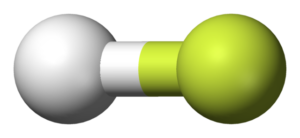Playlist
Show Playlist
Hide Playlist
Observable Polarity – Electronegativity
-
Slides 05 Chemistry Basics Le Gresley.pdf
-
Download Lecture Overview
00:00 These effects of electron withdrawing and electron donation can be felt through bonds and also through space. 00:08 So let’s take a look at the simple example I’ve shown here where we have a chlorine attached directly to a carbon and, because chlorine is in Group 7 and is more electronegative than the carbon, it pulls electron density away from that carbon in that covalent bond thus rendering the carbon in this case slightly positive, or delta positive, and the chlorine slightly negative, or delta negative. 00:37 Something that you’ll come across over the course of any additional lectures that you may do, or indeed any organic chemistry that you may read about, is the abbreviation of molecules. Sometimes when we’re only looking at one particular part of the structure we want to discount the rest of it. And this is where the green squiggle line comes into play. The green squiggle indicates that, whilst we acknowledge that there’s another part to this molecule, it’s largely irrelevant to what we are trying to explain. 01:09 So you’ll also notice that there is an orange arrow between the carbon and the chlorine in the case of this sigma bond. This shows the idea of electrons being pulled along that bond from the carbon to the chlorine. And it’s often used to explain why you observe certain effects in chemistry. If on the other hand we were looking at something which was more electropositive than the carbon – or less electronegative depending on which way you want to talk about this – the arrow in orange shows electrons movement or an inductive effect pushing electrons along that bond from the magnesium to the carbon. This is actually known as a Grignard reagent and we will come onto that perhaps later on. But this renders the carbon delta negative and, in this case, the magnesium delta positive. 02:02 So electron-donating and withdrawing groups: there are a number of them. And so I’m just going to briefly introduce those here. 02:14 We have NR-, O-, S-, CO2-, alkyl, MgBr and other metals as well. And usually when you’re talking about electro donation, the nomenclature is ‘+I.’ So you put electrons in and it is inductive. So therefore it is ’+I.’ Electron-withdrawing groups on the other hand are represented by the term '-I.’ Again ’I’ being inductive, ‘-‘pulling electrons out. 02:48 And, as you can see, there’s a wide variety of these. At this stage, I’m not going to go through all of them but I’m just going to point out that where you have for example fluorine, chlorine, bromine and iodine, you should be aware of course that they are quite electronegative atoms. And it would be expected that they would be able to polarise a bond, for example, with carbon. 03:13 The other ones as we see – or will see – are very important in the context of a wide variety of different reactions not just in terms of synthesis but interactions with certain receptors and key biological targets.
About the Lecture
The lecture Observable Polarity – Electronegativity by Adam Le Gresley, PhD is from the course Chemistry: Introduction.
Included Quiz Questions
Which of the following is not likely to exhibit hydrogen bonding?
- (CH3)3N
- CH3CH2OH
- H2O
- NH2OH
- CH3COOH
Which of the following groups is NOT an electron withdrawing group?
- -CH3
- -NO2
- -CN
- -COCl
- -CF3
Which of the following groups is NOT an electron donating group?
- -Cl
- -NR2
- -NH2
- -OR
- -C2H5
Customer reviews
5,0 of 5 stars
| 5 Stars |
|
5 |
| 4 Stars |
|
0 |
| 3 Stars |
|
0 |
| 2 Stars |
|
0 |
| 1 Star |
|
0 |




